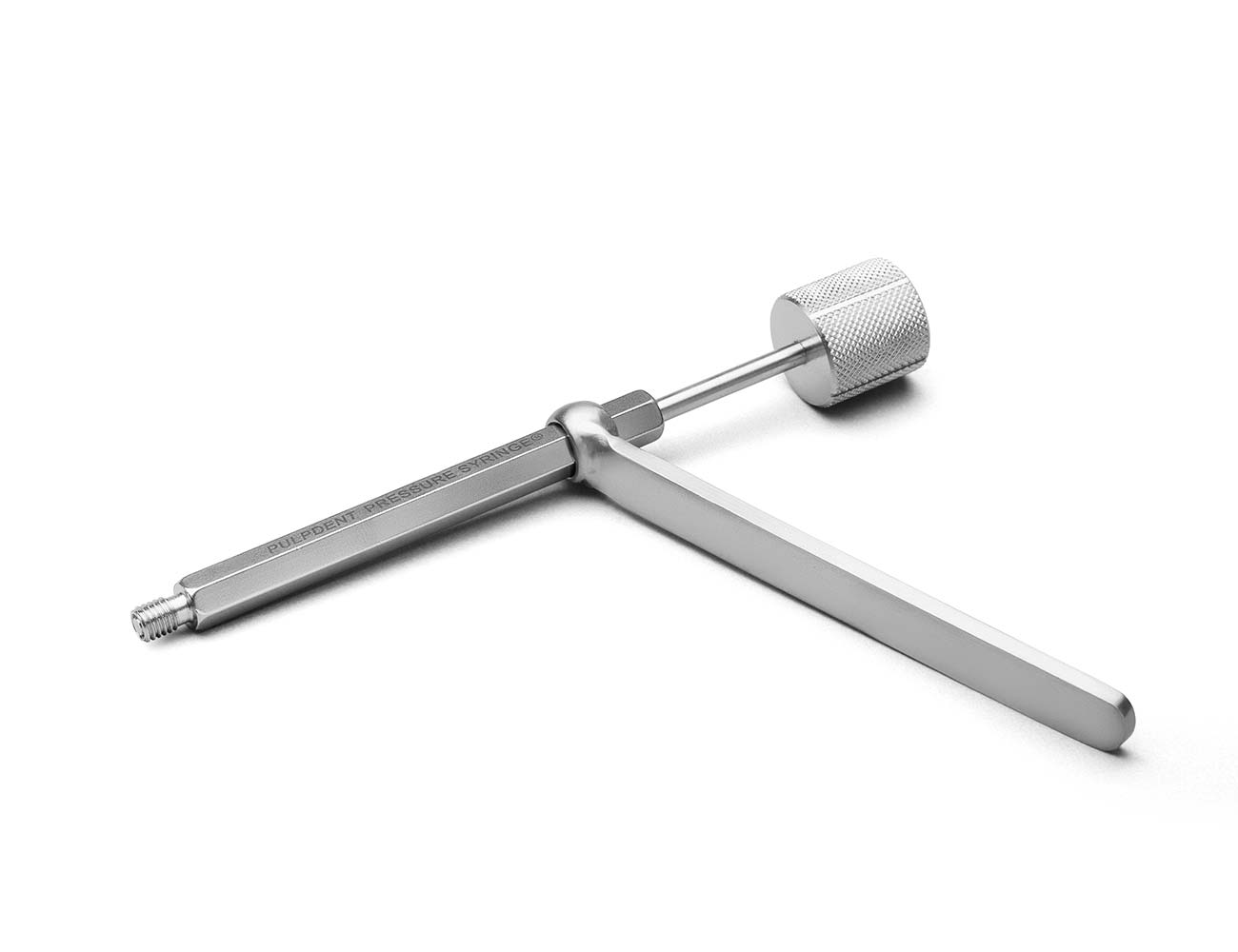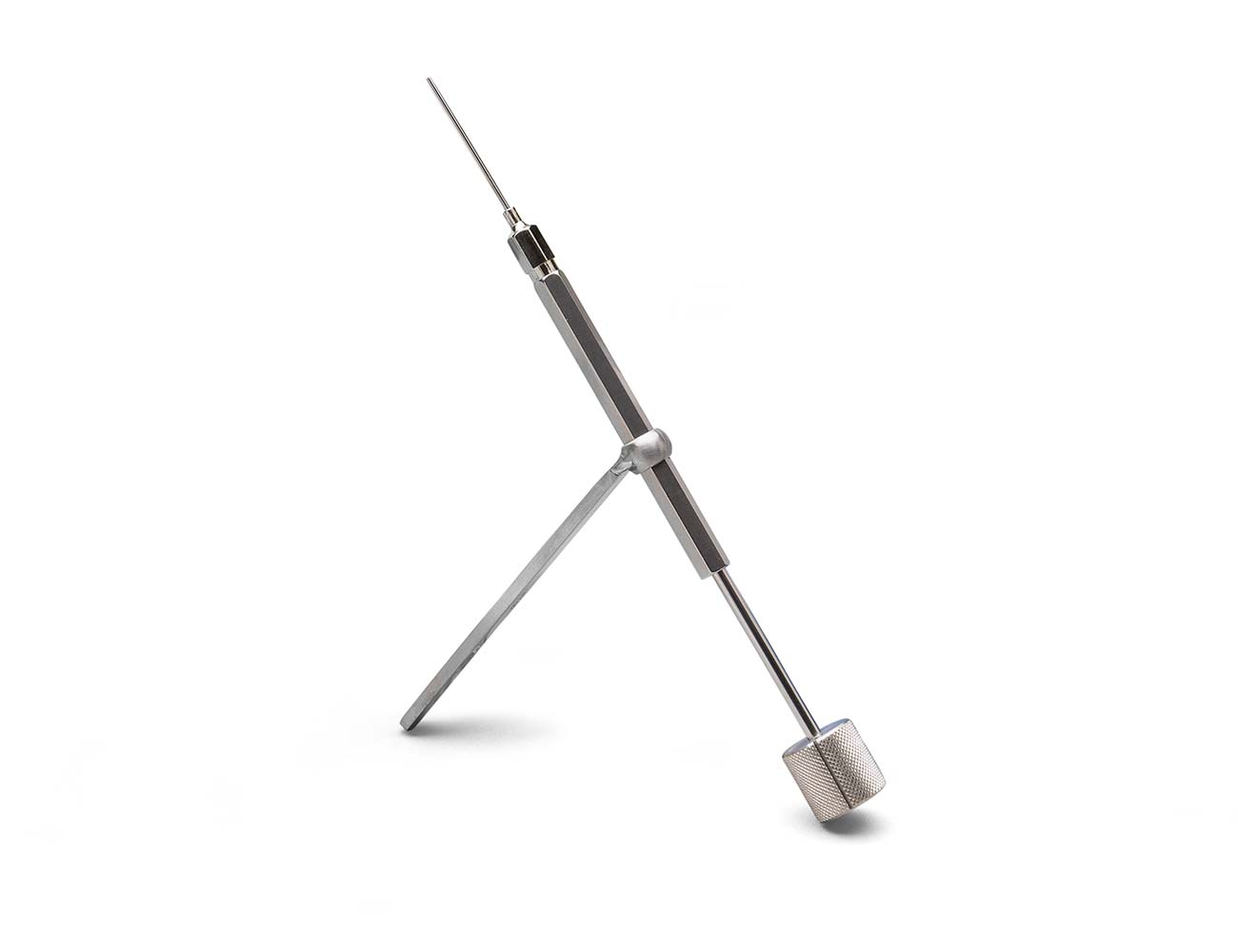
“Fill The Apex First”
Description:
45 years of clinical success
The Original Screw Syringe Device for Filling Root Canals
The original screw syringe still offers the most precise method for obturating root canals with Pulpdent Root Canal Sealer. Fill the apex first to create a positive seal and then accurately backfill the remaining canal space using 30, 25, 22 or 18 gauge blunt needles. Stainless steel construction. Sterilize by any method.
For instructions on the sterilization of dental instruments click here.
Code and Description:

PSK – Pressure Syringe Combo Kit: Pressure Syringe, 30 assorted needles, Pulpdent Root Canal Sealer Kit, Wonder Orange
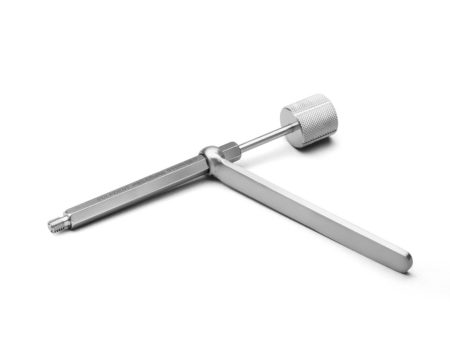
PSO – Pressure Syringe only
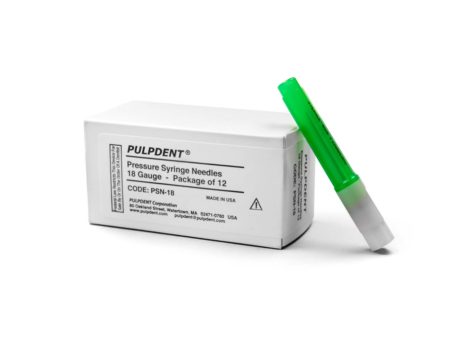
PSN-18 – Pressure Syringe® Needles, 1-1/4” – Pkg. of 12, 18 gauge

PSN-18A – Pressure Syringe® Needles, 1-1/4” – Pkg. of 30, 18 gauge

PSN-18H – Pressure Syringe® Needles, 1-1/4” – Pkg. of 100, 18 gauge

PSN-22 – Pressure Syringe® Needles, 1-1/4” – Pkg. of 12, 22 gauge

PSN-22A – Pressure Syringe® Needles, 1-1/4” – Pkg. of 30, 22 gauge

PSN-22H – Pressure Syringe® Needles, 1-1/4” – Pkg. of 100, 22 gauge
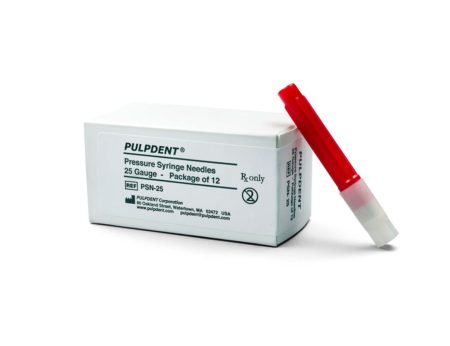
PSN-25 – Pressure Syringe® Needles, 1-1/4” – Pkg. of 12, 25 gauge

PSN-25A – Pressure Syringe® Needles, 1-1/4” – Pkg. of 30, 25 gauge

PSN-25H – Pressure Syringe® Needles, 1-1/4” – Pkg. of 100, 25 gauge
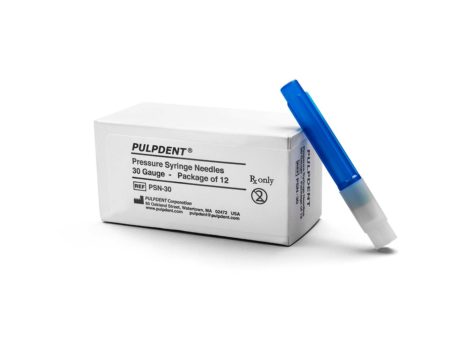
PSN-30 – Pressure Syringe® Needles, 1-1/4” – Pkg. of 12, 30 gauge

PSN-30A – Pressure Syringe® Needles, 1-1/4” – Pkg. of 30, 30 gauge

PSN-30H – Pressure Syringe® Needles, 1-1/4” – Pkg. of 100, 30 gauge
Order Now:
Product:






